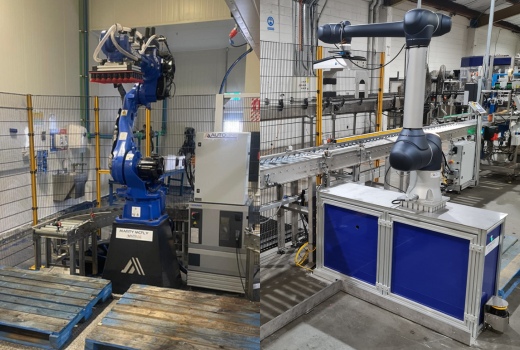Robotics and vibratory bowl feeders are becoming increasingly popular in manufacturing and assembly processes as companies seek to improve production efficiency and accuracy. Vibratory bowl feeders are machines that use vibrations to sort, orient, and feed small parts or components, such as screws, nuts, and bolts, to be picked up by a robot or other automated system.
By using robotics with vibratory bowl feeders, manufacturers can automate repetitive tasks that would otherwise require human labour. This can significantly increase production rates and improve product quality by reducing errors and inconsistencies caused by human error. Additionally, automation can help manufacturers save money by reducing labour costs and allowing employees to focus on more complex and value-added tasks.
One of the biggest advantages of using robotics with vibratory bowl feeders is the speed at which parts can be handled. With automated systems, parts can be handled and placed in their proper locations much faster than with human labour, which can significantly increase production rates. This is particularly beneficial for high-volume production environments, where speed and efficiency are critical to meeting demand.
Another advantage of robotics and vibratory bowl feeders is the accuracy and precision they provide. Vibratory bowl feeders can be customised to handle parts of various shapes and sizes, and can even be programmed to handle delicate or complex parts that require precise handling. The robot, in turn, can be programmed to pick up and place the parts with precision and accuracy, reducing the risk of errors and improving product quality.
In addition to speed and accuracy, robotics and vibratory bowl feeders can also help reduce waste and scrap. By handling parts more carefully and consistently than human labor, they can help minimize defects and ensure that all parts are properly assembled. This can reduce the need for rework or scrap, which can save manufacturers significant amounts of time and money in the long run.
In conclusion, the combination of robotics and vibratory bowl feeders can lead to faster, more accurate, and more efficient production processes, allowing manufacturers to improve productivity, reduce costs, and produce higher quality products. As the technology continues to evolve and become more accessible, it is likely that more and more companies will turn to these systems to stay competitive in today’s fast-paced manufacturing environment.





